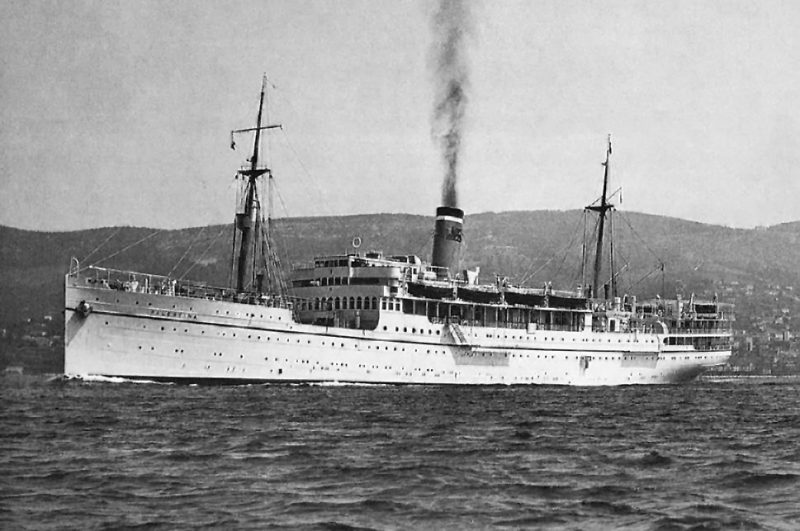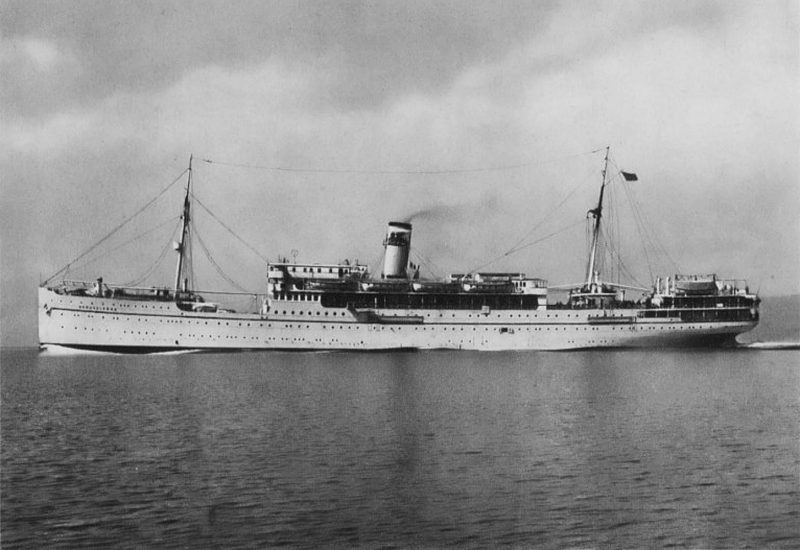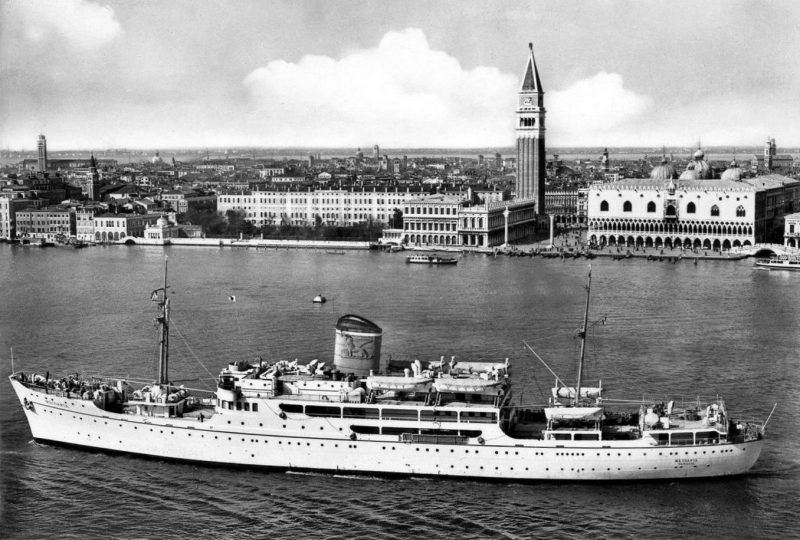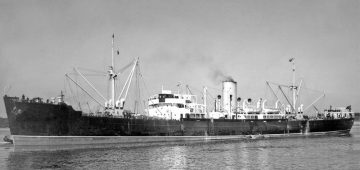The Italian Ferry Companies
The severe Depression of the early 1930s saw Italian shipping companies unable to pay back their loans to the Italian Commercial Bank. Benito Mussolini then set up in 1932 a new State owned holding company, Societa Finanziara Industriale Italiana, to take over the locked in shipping assets. State guaranteed bonds were issued to finance maritime holdings and these in turn financed the reshaped deep sea fleets of Italia Line and Lloyd Triestino, and the short sea and Mediterranean passenger fleets of Adriatica and Tirrenia.

On 4th April 1932, a reshaped Societa per Azioni di Navigazione Adriatica (Adriatic Shipping Co. Ltd.) was formed in Venice, with this fleet increased in size by the takeover of several small private shipping companies including ‘Costeira’, ‘Nautica’, ‘Puglia’, ‘San Marco’ and ‘Zaratina’, and operating from the ports of Venice, Ancona, Bari and Brindisi to the Istrian Peninsula, Yugoslavia and Albania. ‘Fiumana’ joined in 1936 to complete the control of all Adriatic services. A new Societa per Azioni di Navigazione Tirrenia (Tirrenia Shipping Co. Ltd.) was formed on 17th December 1936, based in Naples, as a State owned entity following the nationalization of several private shipping companies, and principally the ‘Florio’ and ‘Citra’ (Compagnia Italiana Transatlantica) fleets.
Adriatica
Venice was founded in the year 421 on the islands of the Rivo Alto in the forty mile lagoon that today stretches from Chioggia in the south to Porto Marghera in the north. The city became one of the four Maritime Republics of Italy, the others being Genoa, Pisa (connected to the sea at that time), and Amalfi. The emblems of the four Maritime Republics are displayed today in the four quarters of the flag of the Italian Navy. The winged lion is the emblem of the city of Venice, and was very proudly displayed on the Adriatica funnels.


The remit of this Venice based company included all cross Adriatic Sea passenger and cargo services, as well as services to Greece, Turkey and the Eastern Mediterranean countries of Palestine and Egypt. Accordingly, five medium sized passenger liners of up to 11,400 grt were transferred from Lloyd Triestino to operate the Levant service. These were Esperia, Galilea, Gerusalemme, Marco Polo and Palestina, all built between 1912 and 1920. The coastal Adriatica services were operated by a fleet of twenty diesel powered vessels of between 1,975 grt and 3,400 grt, mostly twin screw and powered by two 6-cylinder Fiat diesels. These included Adriatico, Barletta, Brindisi, Brioni, Caldea, Calitea, Cilicia, Citta di Bari, Egeo, Egitto, Lero, Loredan, Narenta, Rodi and Zara, as well as several older steamers including Celio, Diana, Duino and Merano. In 1938, the fleet of the old ‘Adria’ shipping company was taken over, with a general cargo and fruit service from Italy and North African ports to North European ports. The Adriatica funnel colours in 1938 became deep yellow/ochre with thin red and white bands below a black top and carrying the Venezian winged bronze lion.
A large Adriatica fleet of 42 ships (24 motor, 18 steam powered) was owned when Italy entered World War II in the summer of 1940, but after three years of fighting, and a further two years when Germany carried on the fighting, the Italian merchant fleet had been almost totally devastated, with only 95 small Italian merchant ships still afloat in the summer of 1945. One notable exception in the Adriatica fleet was the passenger liner Gerusalemme, completed in 1920 as Cracovia for Lloyd Triestino and renamed Gerusalemme in 1934 and later transferred to Adriatica. She survived because, after the Italian surrender in June 1943, she was seized by the British Government and used as a hospital ship until returned to her owners in 1946. She then restarted the Levant service with accommodation for 440 passengers in three classes, and her four old steam turbines were still capable of 14 knots.
However, the Italian merchant fleet took a long time to rebuild itself after the war, as the shipyards were devastated and new construction was severely restricted by the Allies. The shipyards and factories were rebuilt, but the workforce lived a hand to mouth existence with inflation double that at the start of the war. An Italian seamen’s strike in 1949 inconvenienced thousands of passengers, but a new Adriatica passenger liner was eventually completed at Monfalcone in September 1949 named Esperia of 9,314 grt, with accommodation for 500 passengers in three classes to partner Gerusalemme on the Levant route. The cargo fleet was rebuilt using three American ‘Jeep’ types renamed Belluno, Rovigo and Treviso and four new cargo ships named Chioggia, Loredan, Udine and Vicenza. The fleet had been rebuilt to fifteen ships by 1950 for its many services, which was supplemented by chartered ships such as Valfiorita of Lloyd Mediterraneo spA, better known as Perth completed in 1920 by the Caledon yard at Dundee for the North Sea services of the Dundee, Perth and London Shipping Co. Ltd.

The Adriatica passenger and cargo ships Enotria and Messapia of 5,713 grt were completed in 1951/52 at Leghorn and Taranto respectively with accommodation for 282 passengers in three classes and could carry 2,250 tonnes of cargo. They gave 25 years of service to Adriatica on the long haul Venice to Alexandria route via Piraeus before they were sold to Cypriot owners and renamed Kowther and Zamzam respectively. Zamzam then gave more years of service to Orri Navigation Lines of Saudi Arablia. The Adriatica company had naturally very strong associations in Venice, notably the Palace of the Adriatic, which carried the emblem of the Marine Serenissima, the winged Venezian lion, and very large green winged lions were adorned on the funnels of Messapia and Enotria.

Subscribe today to read the full article!
Simply click below to subscribe and not only read the full article instantly, but gain unparalleled access to the specialist magazine for shipping enthusiasts.


Comments
Sorry, comments are closed for this item